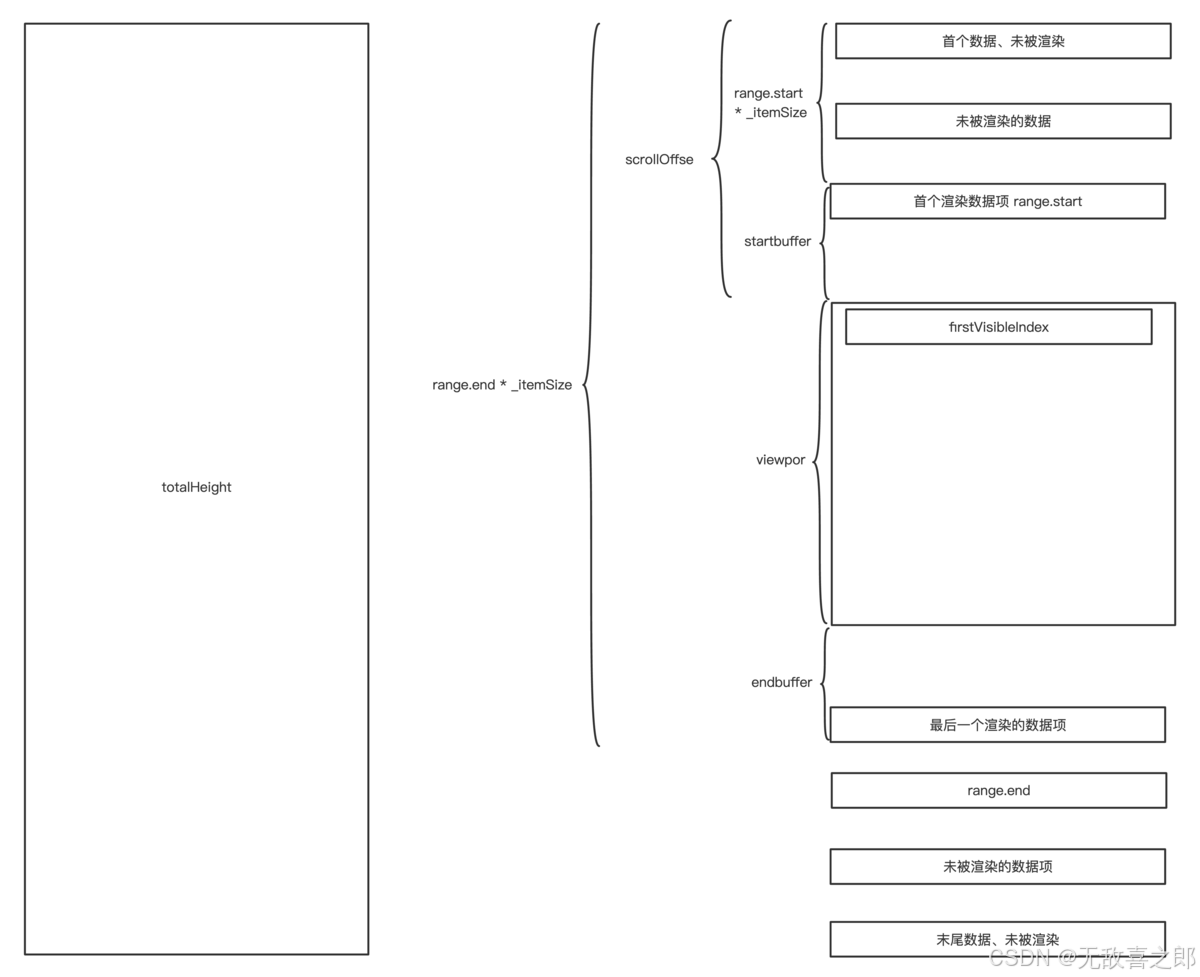Decomposition of the Boundary Value Problem for Radiative Transfer Equation of MODIS and MISR instruments

0.Notions
Let
L
L
L be the straming-collision operator, and
S
S
S is scattering operator:
L
I
=
Ω
⋅
∇
I
(
r
,
Ω
)
+
σ
(
r
,
Ω
)
I
(
r
,
Ω
)
S
=
∫
4
π
σ
s
(
r
,
Ω
′
,
Ω
)
I
(
r
,
Ω
′
)
d
Ω
′
LI = \Omega\cdot \nabla I(r,\Omega)+\sigma(r,\Omega)I(r,\Omega)\\ S=\int_{4\pi}\sigma_s(r,\Omega',\Omega)I(r,\Omega')d\Omega'
LI=Ω⋅∇I(r,Ω)+σ(r,Ω)I(r,Ω)S=∫4πσs(r,Ω′,Ω)I(r,Ω′)dΩ′
To descirbe reflective properties of boundary
δ
V
\delta V
δV, the scattering operator defined on the boundary
δ
V
\delta V
δV for radiation exiting the regine
V
V
V is indroduced as
R
I
+
=
1
π
∫
δ
V
d
r
B
′
∫
n
(
r
B
′
)
⋅
Ω
′
>
0
ρ
B
(
r
B
′
,
Ω
′
;
r
B
,
Ω
)
∣
n
(
r
B
′
)
⋅
Ω
′
∣
I
+
(
r
B
′
,
Ω
′
)
d
Ω
′
\mathcal{R}I^+=\frac{1}{\pi}\int_{\delta V} dr_B'\int_{n(r_B')\cdot \Omega'>0}\rho_B(r_B',\Omega';r_B,\Omega)|n(r_B')\cdot \Omega'|I^+(r_B',\Omega')d\Omega'
RI+=π1∫δVdrB′∫n(rB′)⋅Ω′>0ρB(rB′,Ω′;rB,Ω)∣n(rB′)⋅Ω′∣I+(rB′,Ω′)dΩ′
Here, we use
I
+
I^+
I+ to represent the radiance exiting and
I
−
I^-
I− entering domina V. And then, the stationary radiative transfer equation could be expressed as
L
I
=
S
I
+
q
I
−
=
R
I
+
q
B
LI = SI +q \quad I^-=\mathcal{R}I+q_B
LI=SI+qI−=RI+qB
And if
R
\mathcal{R}
R is 0 and
q
B
q_B
qB is 0, the porblem is called standard porblem and the straming-collision oprator would be write as
L
0
L_0
L0.
1.Black Soil Problem
The RTE is
L
I
=
S
I
+
q
I
−
=
R
I
+
q
B
.
LI = SI +q \quad I^-=\mathcal{R}I+q_B.
LI=SI+qI−=RI+qB.
As in Green function blog before, we have
I
(
r
,
Ω
)
=
I
b
s
(
r
,
Ω
)
+
I
r
e
s
t
(
r
,
Ω
)
I(r,\Omega) = I_{bs}(r,\Omega)+I_{rest}(r,\Omega)
I(r,Ω)=Ibs(r,Ω)+Irest(r,Ω)
The first question is black soil problem, means that the bottom of canopy is non-reflecting surface (soil absorption is 1, black soil), so its the solution of
L
I
b
s
=
S
I
b
s
I
b
s
(
r
t
,
Ω
)
=
c
T
δ
(
Ω
,
Ω
0
)
+
d
(
r
t
,
Ω
)
I
b
s
−
(
r
l
,
Ω
)
=
0
I
b
s
−
(
r
b
,
Ω
)
=
0
\begin{aligned} &LI_{bs}=SI_{bs}\\ &I_{bs}^(r_t,\Omega)=c_T\delta(\Omega,\Omega_0)+d(r_t,\Omega)\\ &I_{bs}^-(r_l,\Omega)=0\\ &I_{bs}^-(r_b,\Omega)=0 \end{aligned}
LIbs=SIbsIbs(rt,Ω)=cTδ(Ω,Ω0)+d(rt,Ω)Ibs−(rl,Ω)=0Ibs−(rb,Ω)=0
Here, we assumte the lateral effects is zero.
2.Canopy-Surface Interation
For notion, we use
I
r
I_r
Ir for the
I
r
e
s
t
I_{rest}
Irest. We have that
L
I
r
=
S
I
r
LI_r=SI_r
LIr=SIr
and the boundary conditions is
I
r
−
(
r
t
,
Ω
)
=
0
I
r
−
(
r
l
,
Ω
)
=
0
I
r
−
(
r
b
,
Ω
)
=
R
I
+
\begin{aligned} &I_r^-(r_t,\Omega)=0\\ &I_r^-(r_l,\Omega)=0\\ &I_r^-(r_b,\Omega)=\mathcal{R}I^+ \end{aligned}
Ir−(rt,Ω)=0Ir−(rl,Ω)=0Ir−(rb,Ω)=RI+
The solution
I
r
I_r
Ir of this boundary value problem depend on the solution of “complete tranport problem”
I
=
I
b
s
+
I
r
I=I_{bs}+I_r
I=Ibs+Ir (since
R
I
+
\mathcal{R}I^+
RI+) is also not known. It need further decompose.
The lower boundary conditions can be rewritten as
I
r
−
(
r
b
,
Ω
)
=
R
I
+
T
T
I_r^-(r_b,\Omega)=\frac{\mathcal{R}I^+}{T}T
Ir−(rb,Ω)=TRI+T
Here,
T
T
T is downward radiation flux density at canopy bottom, i.e.,
T
(
r
b
)
=
∫
n
(
r
b
)
⋅
Ω
′
>
0
I
(
r
b
,
Ω
′
)
∣
Ω
′
⋅
n
(
r
b
)
∣
d
Ω
′
,
r
b
∈
δ
V
T(r_b)=\int_{n(r_b)\cdot\Omega'>0}I(r_b,\Omega')|\Omega'\cdot n(r_b)|d\Omega', \ \ r_b\in\delta V
T(rb)=∫n(rb)⋅Ω′>0I(rb,Ω′)∣Ω′⋅n(rb)∣dΩ′, rb∈δV
The ratio
R
I
+
T
\frac{\mathcal{R}I^+}{T}
TRI+ is a factor of
π
\pi
π smaller than HDRF (since there is no
1
/
π
1/\pi
1/π in the dominator compared to HDRF).
And then ground BHR could be writen as
ρ
e
f
f
(
r
b
)
=
∫
n
(
r
b
)
⋅
Ω
′
>
0
∫
n
(
r
b
)
⋅
Ω
<
0
∣
n
(
r
b
)
⋅
Ω
′
∣
π
−
1
ρ
b
(
r
b
,
Ω
′
,
Ω
)
∣
Ω
⋅
n
(
r
b
)
∣
I
(
r
b
,
Ω
′
)
d
Ω
′
d
Ω
∫
n
(
r
b
)
⋅
Ω
′
>
0
∣
Ω
′
⋅
n
(
r
b
)
∣
I
(
r
b
,
Ω
′
)
d
Ω
′
\rho_{eff}(r_b)=\frac{\int_{n(r_b)\cdot\Omega'>0}\int_{n(r_b)\cdot\Omega<0}|n(r_b)\cdot\Omega'|\pi^{-1}\rho_b(r_b,\Omega',\Omega)|\Omega\cdot n(r_b)|I(r_b,\Omega')d\Omega'd\Omega}{\int_{n(r_b)\cdot\Omega'>0}|\Omega'\cdot n(r_b)|I(r_b,\Omega')d\Omega'}
ρeff(rb)=∫n(rb)⋅Ω′>0∣Ω′⋅n(rb)∣I(rb,Ω′)dΩ′∫n(rb)⋅Ω′>0∫n(rb)⋅Ω<0∣n(rb)⋅Ω′∣π−1ρb(rb,Ω′,Ω)∣Ω⋅n(rb)∣I(rb,Ω′)dΩ′dΩ
Here,
ρ
b
\rho_b
ρb is the BRF of canopy ground. So we could find that the denomator is actually the
T
T
T, which means that
ρ
e
f
f
=
s
o
m
e
t
h
i
n
g
T
\rho_{eff}=\frac{something}{T}
ρeff=Tsomething.
For horizontally inhomogeneous vegetation canopy, T T T vary a lot, but BHR would not so.
Now, we introduce the effective ground anisotropy:
d
b
(
r
b
,
Ω
)
=
R
I
+
T
ρ
e
f
f
=
1
ρ
e
f
f
⋅
∫
2
π
+
ρ
b
(
r
b
,
Ω
′
,
Ω
)
∣
n
(
r
b
)
⋅
Ω
′
∣
I
(
r
b
,
Ω
′
)
d
Ω
′
π
∫
2
π
−
∣
Ω
′
⋅
n
(
r
b
)
∣
I
(
r
b
,
Ω
′
)
d
Ω
′
\begin{aligned} d_b(r_b,\Omega)&=\frac{\mathcal{R}I^+}{T\rho_{eff}}\\ &=\frac{1}{\rho_{eff}}\cdot\frac{\int_{2\pi+}\rho_b(r_b,\Omega',\Omega)|n(r_b)\cdot\Omega'|I(r_b,\Omega')d\Omega'}{\pi\int_{2\pi-}|\Omega'\cdot n(r_b)|I(r_b,\Omega')d\Omega'} \end{aligned}
db(rb,Ω)=TρeffRI+=ρeff1⋅π∫2π−∣Ω′⋅n(rb)∣I(rb,Ω′)dΩ′∫2π+ρb(rb,Ω′,Ω)∣n(rb)⋅Ω′∣I(rb,Ω′)dΩ′
This value seems strange. But if we use
ρ
e
f
f
=
s
o
m
e
t
h
i
n
g
T
\rho_{eff}=\frac{something}{T}
ρeff=Tsomething, we could find that this is actually tha ratio of reflected flux density and radiance. So its cosine-weighted intergral over upward directions is unity:
∫
2
π
+
d
b
(
r
b
,
Ω
)
∣
n
(
r
b
)
⋅
Ω
∣
d
Ω
=
1.
\int_{2\pi+}d_b(r_b,\Omega)|n(r_b)\cdot\Omega|d\Omega=1.
∫2π+db(rb,Ω)∣n(rb)⋅Ω∣dΩ=1.
So this term descibed the inhomogenous of the surface., its something with denonimator a flux density and numenator is reflected radiance with some direction.
By using the Equation (12), we obtain
I
r
−
(
r
b
,
Ω
)
=
R
I
+
=
ρ
e
f
f
T
(
r
b
)
d
b
(
r
b
,
Ω
)
I_r^-(r_b,\Omega)=\mathcal{R}I^+=\rho_{eff}T(r_b)d_b(r_b,\Omega)
Ir−(rb,Ω)=RI+=ρeffT(rb)db(rb,Ω)
Using Green function method with
q
=
I
r
−
q=I_r^-
q=Ir−, we obtain
I
r
(
r
,
Ω
)
=
∫
δ
V
d
r
b
′
∫
n
(
r
b
′
)
⋅
Ω
′
<
0
d
Ω
′
G
S
(
r
,
Ω
;
r
b
′
,
Ω
′
)
ρ
e
f
f
(
r
b
′
)
d
b
(
r
b
′
,
Ω
′
)
T
(
r
b
′
)
I_r(r,\Omega)=\int_{\delta V}dr_b'\int_{n(r_b')\cdot\Omega'<0}d\Omega'G_S(r,\Omega;r_b',\Omega')\rho_{eff}(r_b')d_b(r_b',\Omega')T(r_b')
Ir(r,Ω)=∫δVdrb′∫n(rb′)⋅Ω′<0dΩ′GS(r,Ω;rb′,Ω′)ρeff(rb′)db(rb′,Ω′)T(rb′)
Substituing this into Equation (5) we get that
I
(
r
,
Ω
)
=
I
b
s
(
r
,
Ω
)
+
∫
δ
V
b
d
r
b
′
ρ
e
f
f
(
r
b
′
)
T
(
r
b
′
)
J
(
r
,
Ω
;
r
b
′
)
I(r,\Omega)=I_{bs}(r,\Omega)+\int_{\delta V_b}dr_b'\rho_{eff}(r_b')T(r_b')J(r,\Omega;r_b')
I(r,Ω)=Ibs(r,Ω)+∫δVbdrb′ρeff(rb′)T(rb′)J(r,Ω;rb′)
where
J
(
r
,
Ω
;
r
b
′
)
=
∫
n
(
r
b
′
)
⋅
Ω
′
<
0
d
Ω
′
G
S
(
r
,
Ω
;
r
′
,
Ω
′
)
d
b
(
r
b
′
,
Ω
′
)
J(r,\Omega;r_b')=\int_{n(r_b')\cdot\Omega'<0}d\Omega'G_S(r,\Omega;r',\Omega')d_b(r_b',\Omega')
J(r,Ω;rb′)=∫n(rb′)⋅Ω′<0dΩ′GS(r,Ω;r′,Ω′)db(rb′,Ω′)
By the theory of Green function,
J
J
J is the intensity of radiation field at r with derection
Ω
\Omega
Ω generated by a point anisotropic source
d
b
(
r
b
′
,
Ω
′
)
δ
(
r
b
,
r
b
′
)
d_b(r_b',\Omega')\delta(r_b,r_b')
db(rb′,Ω′)δ(rb,rb′) located at
r
b
′
r_b'
rb′.
With
T
(
r
b
)
=
∫
n
(
r
b
)
⋅
Ω
′
>
0
I
(
r
b
,
Ω
′
)
∣
Ω
′
⋅
n
(
r
b
)
∣
d
Ω
′
T(r_b)=\int_{n(r_b)\cdot\Omega'>0}I(r_b,\Omega')|\Omega'\cdot n(r_b)|d\Omega'
T(rb)=∫n(rb)⋅Ω′>0I(rb,Ω′)∣Ω′⋅n(rb)∣dΩ′ and (16), (17), we obtain
T
(
r
b
)
=
∫
n
(
r
b
)
⋅
Ω
′
>
0
(
I
b
s
(
r
b
,
Ω
′
)
+
∫
δ
V
d
r
b
′
ρ
e
f
f
(
r
b
′
)
T
(
r
b
′
)
J
(
r
b
,
Ω
′
;
r
b
′
)
)
∣
Ω
′
⋅
n
(
r
b
)
∣
d
Ω
′
\begin{aligned} T(r_b)=&\int_{n(r_b)\cdot\Omega'>0}(I_{bs}(r_b,\Omega') \\&+\int_{\delta V}dr_b'\rho_{eff}(r_b')T(r_b')J(r_b,\Omega';r_b'))|\Omega'\cdot n(r_b)|d\Omega' \end{aligned}
T(rb)=∫n(rb)⋅Ω′>0(Ibs(rb,Ω′)+∫δVdrb′ρeff(rb′)T(rb′)J(rb,Ω′;rb′))∣Ω′⋅n(rb)∣dΩ′
By letting
T
b
s
=
∫
n
(
r
b
)
⋅
Ω
′
>
0
I
b
s
(
r
b
,
Ω
)
∣
Ω
′
⋅
n
(
r
b
)
∣
d
Ω
′
T_{bs}=\int_{n(r_b)\cdot\Omega'>0}I_{bs}(r_b,\Omega)|\Omega'\cdot n(r_b)|d\Omega'
Tbs=∫n(rb)⋅Ω′>0Ibs(rb,Ω)∣Ω′⋅n(rb)∣dΩ′
and
G
d
(
r
b
,
r
b
′
)
=
∫
n
(
r
b
)
⋅
Ω
′
>
0
d
Ω
′
J
(
r
b
,
Ω
′
;
r
b
′
)
∣
Ω
′
⋅
n
(
r
b
′
)
∣
=
∫
n
(
r
b
)
⋅
Ω
′
>
0
∣
Ω
′
⋅
n
(
r
b
′
)
∣
d
Ω
′
∫
n
(
r
b
′
)
⋅
Ω
′
<
0
d
Ω
′
G
S
(
r
,
Ω
;
r
′
,
Ω
′
)
d
b
(
r
b
′
,
Ω
′
)
\begin{aligned} G_d(r_b,r_b')&= \int_{n(r_b)\cdot\Omega'>0}d\Omega'J(r_b,\Omega';r_b')|\Omega'\cdot n(r_b')|\\ &=\int_{n(r_b)\cdot\Omega'>0}|\Omega'\cdot n(r_b')|d\Omega'\int_{n(r_b')\cdot\Omega'<0}d\Omega'G_S(r,\Omega;r',\Omega')d_b(r_b',\Omega') \end{aligned}
Gd(rb,rb′)=∫n(rb)⋅Ω′>0dΩ′J(rb,Ω′;rb′)∣Ω′⋅n(rb′)∣=∫n(rb)⋅Ω′>0∣Ω′⋅n(rb′)∣dΩ′∫n(rb′)⋅Ω′<0dΩ′GS(r,Ω;r′,Ω′)db(rb′,Ω′)
Noting that
G
d
G_d
Gd is downward radiation flux density at
r
b
r_b
rb due to point anisotropic source
d
b
(
r
b
,
Ω
′
)
δ
(
r
b
,
r
b
′
)
d_b(r_b,\Omega')\delta (r_b,r_b')
db(rb,Ω′)δ(rb,rb′).
The (18) becomes
T
(
r
b
)
=
T
b
s
+
∫
δ
V
G
d
(
r
,
r
′
)
ρ
e
f
f
(
r
b
′
)
T
(
r
b
′
)
d
r
b
′
T(r_b)=T_{bs} + \int_{\delta V}G_d(r,r')\rho_{eff}(r_b')T(r_b') dr_b'
T(rb)=Tbs+∫δVGd(r,r′)ρeff(rb′)T(rb′)drb′
Since the
J
J
J is the radiance generated by
d
b
(
r
b
′
,
Ω
′
)
δ
(
r
b
,
r
b
′
)
d_b(r_b',\Omega')\delta(r_b,r_b')
db(rb′,Ω′)δ(rb,rb′), so
G
d
G_d
Gd is actually the flux density generated also by it.
Now, we note that
I
S
(
r
,
Ω
)
=
∫
δ
V
d
r
b
′
J
(
r
,
Ω
;
r
b
′
)
=
∫
δ
V
d
r
b
′
∫
n
(
r
b
′
)
⋅
Ω
′
<
0
d
Ω
′
G
S
(
r
,
Ω
;
r
′
,
Ω
′
)
d
b
(
r
b
′
,
Ω
′
)
\begin{aligned} I_S(r,\Omega) &=\int_{\delta V}dr_b' J(r,\Omega;r_b')\\ &=\int_{\delta V}dr_b'\int_{n(r_b')\cdot\Omega'<0}d\Omega'G_S(r,\Omega;r',\Omega')d_b(r_b',\Omega') \end{aligned}
IS(r,Ω)=∫δVdrb′J(r,Ω;rb′)=∫δVdrb′∫n(rb′)⋅Ω′<0dΩ′GS(r,Ω;r′,Ω′)db(rb′,Ω′)
is the intensity of radiation field in canopy generated by anisotropic and heterogeneoussource source
d
b
d_b
db located at canopy bottom. It satiesfy the equation
L
I
S
=
S
I
S
LI_S=SI_S
LIS=SIS
and boundary condtions
I
S
−
(
r
t
,
Ω
)
=
0
I_S^-(r_t,\Omega)=0
IS−(rt,Ω)=0,
I
S
−
(
r
l
,
Ω
)
=
0
I_S^-(r_l,\Omega)=0
IS−(rl,Ω)=0 and
I
−
(
r
b
,
Ω
)
=
d
b
(
r
b
,
Ω
)
I^-(r_b,\Omega)=d_b(r_b,\Omega)
I−(rb,Ω)=db(rb,Ω).
This is the second “basic problem”, “S problem”. It follows that
∫
δ
V
G
d
(
r
,
r
b
′
)
d
r
b
′
=
∫
n
(
r
b
)
⋅
Ω
>
0
I
S
(
r
b
,
Ω
)
∣
Ω
⋅
n
(
r
b
)
∣
d
Ω
\int_{\delta_V}G_d(r,r_b')dr_b'=\int_{n(r_b)\cdot\Omega>0}I_S(r_b,\Omega)|\Omega\cdot n(r_b)|d\Omega
∫δVGd(r,rb′)drb′=∫n(rb)⋅Ω>0IS(rb,Ω)∣Ω⋅n(rb)∣dΩ
The integral of
G
d
G_d
Gd over boundary is downward flux at
r
b
r_b
rb which acount for contribution from all anisotropic sources at canopy bottom.
Rethinking the equation (16), the J is actually a weight to weight the all reflected flux density.
The ground BHR (Equation (11)) and the effective ground anisotropy is independent on vegetation canopy and are known.
Once G d G_d Gd is given, one can solve Equation (18) and substitude it into (15).
Solution of horizontally homogeneous vegetation canopy with Lambertian surface
If we assume that the gournd BRF is homegeneous Lambertian surface, then,
T
b
s
T_{bs}
Tbs and T is independent to (x,y) . And gournd BHR become
ρ
e
f
f
=
∫
n
(
r
b
)
⋅
Ω
′
>
0
∫
n
(
r
b
)
⋅
Ω
<
0
∣
n
(
r
b
)
⋅
Ω
′
∣
π
−
1
ρ
b
(
r
b
,
Ω
′
,
Ω
)
∣
Ω
⋅
n
(
r
b
)
∣
I
(
r
b
,
Ω
′
)
d
Ω
′
d
Ω
∫
n
(
r
b
)
⋅
Ω
′
>
0
∣
Ω
′
⋅
n
(
r
b
)
∣
I
(
r
b
,
Ω
′
)
d
Ω
′
=
ρ
b
∫
n
(
r
b
)
⋅
Ω
<
0
d
Ω
∣
Ω
⋅
n
(
r
b
)
∣
π
=
ρ
b
\begin{aligned} \rho_{eff}&=\frac{\int_{n(r_b)\cdot\Omega'>0}\int_{n(r_b)\cdot\Omega<0}|n(r_b)\cdot\Omega'|\pi^{-1}\rho_b(r_b,\Omega',\Omega)|\Omega\cdot n(r_b)|I(r_b,\Omega')d\Omega'd\Omega}{\int_{n(r_b)\cdot\Omega'>0}|\Omega'\cdot n(r_b)|I(r_b,\Omega')d\Omega'}\\ &=\frac{\rho_b\int_{n(r_b)\cdot\Omega<0}d\Omega|\Omega\cdot n(r_b)|}{\pi}\\ &=\rho_b \end{aligned}
ρeff=∫n(rb)⋅Ω′>0∣Ω′⋅n(rb)∣I(rb,Ω′)dΩ′∫n(rb)⋅Ω′>0∫n(rb)⋅Ω<0∣n(rb)⋅Ω′∣π−1ρb(rb,Ω′,Ω)∣Ω⋅n(rb)∣I(rb,Ω′)dΩ′dΩ=πρb∫n(rb)⋅Ω<0dΩ∣Ω⋅n(rb)∣=ρb
and effective ground anisotropy is
d
b
(
r
b
,
Ω
)
=
R
I
+
T
ρ
e
f
f
=
1
ρ
e
f
f
⋅
∫
2
π
+
ρ
b
(
r
b
,
Ω
′
,
Ω
)
∣
n
(
r
b
)
⋅
Ω
′
∣
I
(
r
b
,
Ω
′
)
d
Ω
′
π
∫
2
π
−
∣
Ω
′
⋅
n
(
r
b
)
∣
I
(
r
b
,
Ω
′
)
d
Ω
′
=
ρ
b
ρ
e
f
f
π
=
1
π
\begin{aligned} d_b(r_b,\Omega)&=\frac{\mathcal{R}I^+}{T\rho_{eff}}\\ &=\frac{1}{\rho_{eff}}\cdot\frac{\int_{2\pi+}\rho_b(r_b,\Omega',\Omega)|n(r_b)\cdot\Omega'|I(r_b,\Omega')d\Omega'}{\pi\int_{2\pi-}|\Omega'\cdot n(r_b)|I(r_b,\Omega')d\Omega'}\\ &=\frac{\rho_b}{\rho_{eff}\pi}=\frac{1}{\pi} \end{aligned}
db(rb,Ω)=TρeffRI+=ρeff1⋅π∫2π−∣Ω′⋅n(rb)∣I(rb,Ω′)dΩ′∫2π+ρb(rb,Ω′,Ω)∣n(rb)⋅Ω′∣I(rb,Ω′)dΩ′=ρeffπρb=π1
Then the Equation (21) become
T
=
T
b
s
+
∫
δ
V
G
d
(
r
b
,
r
b
′
)
ρ
e
f
f
T
d
r
b
′
=
T
b
s
+
ρ
b
T
∫
δ
V
G
d
(
r
b
,
r
b
′
)
d
r
b
′
→
T
(
1
−
ρ
b
T
R
S
)
=
T
b
s
→
T
=
T
b
s
1
−
ρ
b
R
s
\begin{aligned} T &=T_{bs} + \int_{\delta V}G_d(r_b,r_b')\rho_{eff}T dr_b'\\ &= T_{bs} + \rho_bT\int_{\delta V}G_d(r_b,r_b')dr_b'\\ &\rightarrow T(1-\rho_bTR_S)=T_{bs}\\ &\rightarrow T=\frac{T_{bs}}{1-\rho_bR_s} \end{aligned}
T=Tbs+∫δVGd(rb,rb′)ρeffTdrb′=Tbs+ρbT∫δVGd(rb,rb′)drb′→T(1−ρbTRS)=Tbs→T=1−ρbRsTbs
where
R
S
=
∫
δ
V
G
d
(
r
b
,
r
b
′
)
d
r
b
′
R_S=\int_{\delta V}G_d(r_b,r_b')dr_b'
RS=∫δVGd(rb,rb′)drb′
is the downward flux density at
r
b
r_b
rb generated by source
1
π
\frac{1}{\pi}
π1 (since
d
b
d_b
db has become
1
/
π
1/\pi
1/π and combine the Equation (24) and (23)).
Substituting Eq. (22) into Eq. (16), we obtain:
I
(
r
,
Ω
)
=
I
b
s
(
r
,
Ω
)
+
I
S
(
r
,
Ω
)
ρ
e
f
f
T
I(r,\Omega)=I_{bs}(r,\Omega)+I_S(r,\Omega)\rho_{eff}T
I(r,Ω)=Ibs(r,Ω)+IS(r,Ω)ρeffT
Using
ρ
e
f
f
=
ρ
b
\rho_{eff}=\rho_b
ρeff=ρb, Then, by Eq.(27), we obtain:
I
(
r
,
Ω
)
=
I
b
s
(
r
,
Ω
)
+
T
b
s
ρ
b
1
−
ρ
b
R
S
I
S
(
r
,
Ω
)
I(r,\Omega)=I_{bs}(r,\Omega)+\frac{T_{bs}\rho_{b}}{1-\rho_bR_S}I_S(r,\Omega)
I(r,Ω)=Ibs(r,Ω)+1−ρbRSTbsρbIS(r,Ω)
So, the solution of original boundary problem is decomposed into the solution of black-soil problem and S problem.
Solution of horizontally inhomogeneous vegetation canopy
In this case, the solution of Eq. (21) is not directly Eq. (27), and approximation is performed. Consider the ratio
R
S
(
r
b
)
=
∫
δ
V
G
d
(
r
b
,
r
b
′
)
ρ
e
f
f
(
r
b
′
)
T
(
r
b
′
)
d
r
b
′
ρ
e
f
f
(
r
b
′
)
T
(
r
b
′
)
R_S(r_b)=\frac{\int_{\delta V}G_d(r_b,r_b')\rho_{eff}(r_b')T(r_b')dr_b'}{\rho_{eff}(r_b')T(r_b')}
RS(rb)=ρeff(rb′)T(rb′)∫δVGd(rb,rb′)ρeff(rb′)T(rb′)drb′
which is BHR calculated for canopy illuminated by anisotropic sources
ρ
e
f
f
(
r
b
′
)
T
(
r
b
′
)
d
b
(
r
b
′
,
Ω
′
)
\rho_{eff}(r_b')T(r_b')d_b(r_b',\Omega')
ρeff(rb′)T(rb′)db(rb′,Ω′) from below. To understand this, we could think that the numerator is the responsed flux density at
r
b
r_b
rb due to radiance
ρ
e
f
f
(
r
b
′
)
T
(
r
b
′
)
d
b
(
r
b
′
,
Ω
′
)
\rho_{eff}(r_b')T(r_b')d_b(r_b',\Omega')
ρeff(rb′)T(rb′)db(rb′,Ω′) by Eq. (24), and the denomator is
∫
n
(
r
b
′
)
⋅
Ω
′
<
0
ρ
e
f
f
(
r
b
′
)
T
(
r
b
′
)
d
(
r
b
′
Ω
′
)
∣
n
(
r
b
′
)
⋅
Ω
′
∣
d
Ω
′
\int_{n(r_b')\cdot\Omega'<0}\rho_{eff}(r_b')T(r_b')d(r_b'\Omega')|n(r_b')\cdot\Omega'|d\Omega'
∫n(rb′)⋅Ω′<0ρeff(rb′)T(rb′)d(rb′Ω′)∣n(rb′)⋅Ω′∣dΩ′
which is equal to
ρ
e
f
f
(
r
b
′
)
T
(
r
b
′
)
\rho_{eff}(r_b')T(r_b')
ρeff(rb′)T(rb′).
Since the T varies, so the R s R_s Rs varies. But linear operator theory has the conclusion that a continous positive linear operator B B B minimum m n m_n mn and maximum M n M_n Mn values of the function η n = ( B n u ) 1 / n \eta_n=(\sqrt{B^nu})^{1/n} ηn=(Bnu)1/n converge to mazimum eigenvalue ρ ( B ) \rho(B) ρ(B) for any chosen positive function u u u as n tend to infinity.
Here, the numerator in Eq. (35) can be treated as a positive intergral operator B B B with a kernel G d G_d Gd. We have n = 1 n=1 n=1, and we use the maximum eigenvalue R S ˉ \bar{R_S} RSˉ of B B B with kernel G d G_d Gd.
Then , we rewrite the Eq. (25) as
T
(
r
b
)
=
T
b
s
(
r
b
)
+
R
S
ˉ
ρ
e
f
f
(
r
b
)
T
(
r
b
)
.
T(r_b)=T_{bs}(r_b)+\bar{R_S}\rho_{eff}(r_b)T(r_b).
T(rb)=Tbs(rb)+RSˉρeff(rb)T(rb).
Then we have
T
(
r
b
)
=
T
b
s
(
r
b
)
1
−
R
S
ˉ
ρ
e
f
f
(
r
b
)
T(r_b)=\frac{T_{bs}(r_b)}{1-\bar{R_S}\rho_{eff}(r_b)}
T(rb)=1−RSˉρeff(rb)Tbs(rb)
Substitude this into Eq. (16), we obtain
I
(
r
,
Ω
)
=
I
b
s
(
r
,
Ω
)
+
∫
δ
V
d
r
b
′
J
(
r
b
′
;
r
b
′
,
Ω
′
)
ρ
e
f
f
(
r
b
′
)
T
b
s
(
r
b
′
)
1
−
R
S
ˉ
ρ
e
f
f
(
r
b
′
)
I(r,\Omega)=I_{bs}(r,\Omega)+\int_{\delta_V}dr_b'J(r_b';r_b',\Omega')\rho_{eff}(r_b')\frac{T_{bs}(r_b')}{1-\bar{R_S}\rho_{eff}(r_b')}
I(r,Ω)=Ibs(r,Ω)+∫δVdrb′J(rb′;rb′,Ω′)ρeff(rb′)1−RSˉρeff(rb′)Tbs(rb′)
where J has already mentioned below as
J
(
r
,
Ω
;
r
b
′
)
=
∫
n
(
r
b
′
)
⋅
Ω
′
<
0
d
Ω
′
G
S
(
r
,
Ω
;
r
′
,
Ω
′
)
d
b
(
r
b
′
,
Ω
′
)
J(r,\Omega;r_b')=\int_{n(r_b')\cdot\Omega'<0}d\Omega'G_S(r,\Omega;r',\Omega')d_b(r_b',\Omega')
J(r,Ω;rb′)=∫n(rb′)⋅Ω′<0dΩ′GS(r,Ω;r′,Ω′)db(rb′,Ω′)
For futher simlification, we replace the
J
J
J with its mean value over the canopy bottom, then this becomes
I
(
r
,
Ω
)
=
I
b
s
(
r
,
Ω
)
+
∫
δ
V
d
r
b
′
J
(
r
b
′
;
r
b
′
,
Ω
′
)
ρ
e
f
f
ˉ
T
b
s
ˉ
1
−
R
S
ˉ
ρ
e
f
f
ˉ
I(r,\Omega)=I_{bs}(r,\Omega)+\int_{\delta_V}dr_b'J(r_b';r_b',\Omega')\frac{\bar{\rho_{eff}}\bar{T_{bs}}}{1-\bar{R_S}\bar{\rho_{eff}}}
I(r,Ω)=Ibs(r,Ω)+∫δVdrb′J(rb′;rb′,Ω′)1−RSˉρeffˉρeffˉTbsˉ
Then the integral of
J
J
J is
I
S
I_S
IS by Eq. (22), then we have
I
(
r
,
Ω
)
=
I
b
s
(
r
,
Ω
)
+
ρ
e
f
f
ˉ
T
b
s
ˉ
1
−
R
S
ˉ
ρ
e
f
f
ˉ
I
S
(
r
,
Ω
)
I(r,\Omega)=I_{bs}(r,\Omega)+\frac{\bar{\rho_{eff}}\bar{T_{bs}}}{1-\bar{R_S}\bar{\rho_{eff}}}I_S(r,\Omega)
I(r,Ω)=Ibs(r,Ω)+1−RSˉρeffˉρeffˉTbsˉIS(r,Ω)
Then, the results of original boundary problem become the solution of black soil problem and S problem.
Now, we could rewrite the HDRF of the surface :
H
D
R
F
=
<
I
(
Ω
)
>
0
1
π
∫
2
π
−
<
I
(
Ω
′
)
>
0
∣
Ω
′
⋅
n
(
r
b
)
∣
d
Ω
′
=
<
I
b
s
(
r
,
Ω
)
+
ρ
e
f
f
ˉ
T
b
s
ˉ
1
−
R
S
ˉ
ρ
e
f
f
ˉ
I
S
(
r
,
Ω
)
>
1
π
∫
2
π
−
<
I
(
Ω
′
)
>
0
∣
Ω
′
⋅
n
(
r
b
)
∣
d
Ω
′
=
R
b
s
(
Ω
)
+
ρ
e
f
f
ˉ
1
−
R
S
ˉ
ρ
e
f
f
ˉ
t
b
s
T
S
(
Ω
)
\begin{aligned} HDRF&=\frac{<I(\Omega)>_0}{\frac{1}{\pi}\int_{2\pi-}<I(\Omega')>_0 |\Omega'\cdot n(r_b)|d\Omega'}\\ &=\frac{<I_{bs}(r,\Omega)+\frac{\bar{\rho_{eff}}\bar{T_{bs}}}{1-\bar{R_S}\bar{\rho_{eff}}}I_S(r,\Omega)>}{\frac{1}{\pi}\int_{2\pi-}<I(\Omega')>_0 |\Omega'\cdot n(r_b)|d\Omega'}\\ &=R_{bs}(\Omega)+\frac{\bar{\rho_{eff}}}{1-\bar{R_S}\bar{\rho_{eff}}}t_{bs}T_S(\Omega) \end{aligned}
HDRF=π1∫2π−<I(Ω′)>0∣Ω′⋅n(rb)∣dΩ′<I(Ω)>0=π1∫2π−<I(Ω′)>0∣Ω′⋅n(rb)∣dΩ′<Ibs(r,Ω)+1−RSˉρeffˉρeffˉTbsˉIS(r,Ω)>=Rbs(Ω)+1−RSˉρeffˉρeffˉtbsTS(Ω)
Here, transmitance is
t
b
s
=
T
b
s
ˉ
∫
2
π
−
<
I
(
Ω
′
)
>
0
∣
Ω
′
⋅
n
(
r
b
)
∣
d
Ω
′
t_{bs}=\frac{\bar{T_{bs}}}{\int_{2\pi-}<I(\Omega')>_0 |\Omega'\cdot n(r_b)|d\Omega'}
tbs=∫2π−<I(Ω′)>0∣Ω′⋅n(rb)∣dΩ′Tbsˉ
and
T
s
=
<
I
S
(
Ω
)
>
0
1
π
∫
2
π
−
<
d
b
(
Ω
′
)
>
0
∣
Ω
′
⋅
n
(
r
b
)
∣
d
Ω
′
T_s=\frac{<I_S(\Omega)>_0}{\frac{1}{\pi}\int_{2\pi-}<d_b(\Omega')>_0 |\Omega'\cdot n(r_b)|d\Omega'}
Ts=π1∫2π−<db(Ω′)>0∣Ω′⋅n(rb)∣dΩ′<IS(Ω)>0
which is the radiance generated by the isotropic source located at canopy bottom, noting that
∫
2
π
+
d
b
(
r
b
,
Ω
)
∣
n
(
r
b
)
⋅
Ω
∣
d
Ω
=
1.
\int_{2\pi+}d_b(r_b,\Omega)|n(r_b)\cdot\Omega|d\Omega=1.
∫2π+db(rb,Ω)∣n(rb)⋅Ω∣dΩ=1.
So its actually
T
s
=
<
I
S
(
Ω
)
>
0
π
T_s=<I_S(\Omega)>_0\pi
Ts=<IS(Ω)>0π


















